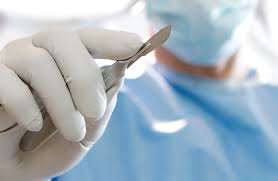Program Structure

Overview Of The Profession
Surgical Technologists are a crucial member of the surgical team. Surgical Technologists can work in a variety of settings: main operating rooms, labor and delivery, sterile processing departments, doctors offices, medical spas, surgery centers and many other places!
Surgical Technologists are usually the first ones in the operating rooms and the last ones out. Before a patient can be brought back into the operating room, it is the job of the Surgical Technologists to make sure the room is ready for the procedure. Ensuring the room is ready for the patient may include: moving equipment, gathering supplies, setting up the sterile field, passing medications, maintaining the sterile field, counting all their instruments and supplies and more.
Surgical Technologists must have a strong knowledge of anatomy, understanding of the the procedures and ability to adapt quickly to anticipate the surgeons needs.
Surgical Technologists must be able to take direction from surgeons but also must be able to function independently within their scope of practice. This often requires the use of critical thinking and problem-solving skills. Surgical Technologists must be able to keep their composure and function in high pressure situations.

Essential Skills & Abilities
Surgical Technologists must possess the following skills and abilities:
1. Physical/Motor Skills
- Stand and walk for extended periods of the time
- Perform physically strenuous tasks including raising patients in bed, maneuvering patients to and from tables/stretchers and carrying or maneuvering equipment
- Rise from a seated position without assistance
- Twist and bend at the waist
- Extend the hands and arms in any direction
- Hold, grasp and turn objects with the hands
- Reach up to six feet off the floor
2. Sensory Abilities
- Correctable near vision to 20 / 40 in at least one eye
- Correctable far vision to 20 / 40 in at least one eye
- Depth perception
- Distinguish shades of gray
- Hear audible speech (e.g. person-to-person communication) at 10 feet
- Hear speech when lips are not visible (e.g. wearing a surgical mask)
- Hear auditory alarms (e.g. patient monitors, fire alarms)
- Hear speech over a telephone
- Detect odors such as smoke, alcohol, noxious gasses
3. Communication Abilities
- Read documents in English
- Write legibly in English
- Speak fluently in English
- Understand speech in English
- Adapt verbal communication to patient/visitor limitations (e.g. hearing loss, pediatrics, diminished mental capacity)
4. Emotional and Behavior Skills
- Willingness to take directions
- Be self-directed and assertive
- Provide emotional support to others in distress
- Adapt to a changing environment
- Monitor own emotional state
- Manage frustration appropriately
- Accept responsibility for own errors or shortcomings
- Express emotions in a socially-acceptable manner
- Respect interpersonal boundaries
- Manage interpersonal and organizational conflicts in a respectful and professional manner
5. Intellectual Abilities
- Recall information with reasonable accuracy
- Recognize cause and effect relationships
- Anticipate/plan ahead for activities or situations
- Perform tasks in a logical and efficient sequence
- Prioritize competing tasks
- Problem solve when the solution is not self-evident
- Use visual/spatial processing in evaluating radiographic images
- Demonstrate attention to detail
- Evaluate own performance to determine corrective actions when appropriate

Assessment Of Essential Skills & Functions
Ascension St. Vincent Surgical Technology Program does not discriminate on the basis of disability as determined by the American with Disabilities Act (ADA). Physical/motor skills, sensory abilities, and communication skills are not assessed during the selection phase of the admissions process.
Emotional/behavioral skills and intellectual abilities are assessed during the selection phase of the admissions process as they relate to a candidate’s academic record, and ability to communicate effectively in English during a personal interview.
Environment of Care
Like any profession, surgical technology involves occupational risk. As such, clinical education involves training in a potentially hazardous environment. While all reasonable efforts are taken to assure student safety including adherence to state and local laws and following institutional policies and procedures, students should be aware of these environmental risks.
- Exposure to infectious diseases: Surgical technology students will be exposed to patients with known and unknown infectious diseases, will handle and dispose of body secretions, blood, stool, etc., and will be exposed to infectious waste and blood borne pathogens. Students are taught proper infection control practices including Standards Precautions and the use of personal protective equipment (PPE) to minimize risk to self and others.
-
Exposure to workplace violence: While these situations rarely occur, contact with combative or aggressive patients, family or visitors may happen. Surgical technology students are taught de-escalation techniques and how to call for assistance when necessary.
- Exposure to sharp instruments: Surgical technology students may be exposed to needles, scalpels, and other sharp objects which may or may not be contaminated with infectious waste and blood borne pathogens. Students are taught to properly handle and dispose of sharp objects to minimize the chance of injury to self and others.
- Exposure to potentially harmful radiation: Surgical technology students might have contact with radiation producing devices. Safety procedures and monitoring are in place to assure student's exposure to radiation is kept to a minimum.
- Ergonomic stressors: Surgical technology students may encounter physical demands of pushing heavy carts, stretchers and other objects. Students are taught proper body mechanics and practices to minimize personal injury.
